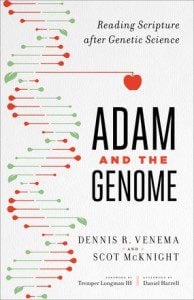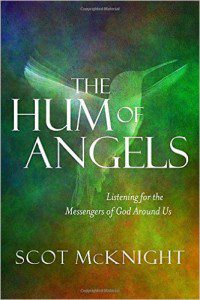This week
My friend and former student, David Jones, sent an important response to CT about James Macdonald’s CT published defense of suing brothers and sisters in Christ. But CT did not publish his response, so here’s the link.
Baltimore — Tuba player Richard White knows just how to make his deep pitched brass instrument growl. But very “few” know the story behind “how” the Baltimore native made it to the big stage.
“Some nights, unfortunately, I couldn’t find my mom. So I would go in abandoned houses or find a piece of cardboard, sleep under trees,” White said.
At the age of 3, White was homeless, living on the streets of inner city Baltimore. His mother, an alcoholic, struggled to keep a roof over their heads. A fountain was a lifeline, providing a place for him to get water and even bathe.
Then, a miracle. He was found alone in a doorway during a snowstorm. But White was later adopted by Vivian and Richard McClain who gave him more than just a home, they gave him a passion for music. He loved it so much that he applied for the Baltimore School for the Arts, run by Chris Ford.
“He comes in, he had a broken hip at the time so he’s got crutches, he’s got this plastic sousaphone wrapped around him,” Ford said.
“I said, ‘I’m here to audition,'” White said. “He said, ‘Oh really? Auditions were yesterday.’ And I said, ‘But I’m here now.'”
Ford said there was something “compelling” about White that was worth taking the chance.
White, who couldn’t even read music at the time persevered. He became the first African-American to earn a doctorate in music in tuba performance and has performed for audiences all over the world.
His life story has now been made into a documentary film called “R.A.W. Tuba,” after his initials, Richard A. White. He continues to perform and teach, at the University of New Mexico.
Librarians and academic monographs:
As the director of a small public library, I read the “Frustrated Patron” Soapbox—in which an author described his attempts to get his local libraries to order his book—in Publishers Weekly’s February 18 issue with a mixture of disbelief and irritation. As someone who ran marketing departments for reference, academic, and adult nonfiction publishers for over 30 years, my eyes rolled to the back of my head. This broadside epitomized the attitude of almost every academic monograph author I have ever met.
Public libraries serve their communities. That means that they always try to provide resources—both print and electronic—that residents of their towns want and need to enrich their lives. In addition to serving as gateways to the largest collections of e-books they can manage, libraries try to keep as many print books on their shelves as possible to meet demand. That last word is important: libraries respond to demand.
We librarians track circulation and interlibrary loan statistics to monitor trends and see what our patrons are calling for most. We read reviews and revisit what we already own to keep up with the best of what is out there, as well as to continue popular series and provide balance to the collection. We do all of this with no personal bias and only from a motive of service.
Just like bookstores, public libraries need to stock the latest bestsellers in fiction and nonfiction; reference books in gardening, cooking, crafts, and history; biographies; autobiographies; graphic novels; YA literature and children’s titles; and on and on. In addition, as much as possible, we try to always have the classics on hand, as well as the titles supporting the curriculum of the local schools. We curate our collections so that even as we acquire new titles from the huge number of books published each year, we retain older books that are of value to our patrons. We do all of this while constrained by budgets that have at best remained flat for years or in too many cases have been cut.
Libraries act as community centers offering makerspaces, educational programs, instruction, computer centers, speakers, and author signings. They subscribe to electronic databases as well as print periodicals. Librarians answer thousands of reference questions of all types each year.
So when an author who wrote a book titled Behind the Front: British Soldiers and French Civilians, 1914–1918 and priced at $107 drops in and tries to sell us his book, we may be courteous (librarians are always courteous), but we will have little interest.
The minute the author’s publisher put that title on his book, it was doomed to sales of no more than 150 copies to college libraries with a special interest in that very narrow topic. The publisher backed up that decision by pricing it at over $75, putting it out of reach of all but the biggest, most research-centric public libraries. Face it: this book—regardless of how well written it might be—is an academic monograph.
Further evidence of this can be found in the fact that it wasn’t reviewed by PW, Booklist, Library Journal, or any of the other review magazines serving bookstores and public libraries. It would be a waste for the publisher to even mail review copies to any publications save for academic journals and Choice, which serve college libraries.
The heart and soul of public education, however, was that the public schools would be administered as a public good, like fire departments and roads. Everyone paid for them, everyone could use them, and everyone could in theory claim a right to co-control them. Even if your house didn’t catch fire, in other words, you paid taxes to support the firefighters. And even if you didn’t drive a car, you paid to maintain the public roads. And those firefighters and road crews were under the supervision of publicly elected officials, answerable in the end to taxpayers. Public schools would be the same way.
This funding arrangement has always been the heart and soul of public education. And it is on the chopping block. Queen Betsy recently proposed a five-billion dollar federal tax-credit scholarship scheme. Like the tax-credit scholarship programs that already exist in eighteen states, this plan would allow taxpayers to claim a credit for donations to certain non-profit organizations that would then send the money to private schools.
In some cases, donors can claim up to 100% of their donations back. For every dollar they “donate,” that is, they get a full dollar rebated from their tax bills. Tax-credit scholarship schemes serve to divert tax money from public education—administered by the public—to private schools without any public oversight.
[Confused? Me, too. For more on the ins and outs of tax-credit scholarships, check out this episode of Have You Heard, featuring the explanations of Carl Davis of the Institute on Taxation and Economic Policy.]
What’s the big deal? In essence, these schemes return us to the world before the public-education $$$ revolution. They return us to the world Joseph Lancaster knew so well in the first decades of the 1800s, where funding for schools was an impossibly tangled mess. Back then, parents who could afford it could send their kids to great schools. Parents who couldn’t had to hope their kids might get lucky and attract the attention of a wealthy philanthropist or a church-run charity program. They had to hope that a mix of government money, private tuition, church support, and philanthropist largesse could support their kids’ educations.
By allowing taxpayers to pick and choose whether or not to support public education, Queen Betsy’s proposal takes us back to those bad old days. Are we really ready to throw in the towel on public education? Ready to return to the old system, with “charity” schools run FOR the public by wealthy benefactors who wouldn’t send their own kids there?
Does your cell phone, or does any of your devices, eavesdrop?
Could it be possible that our phones are somehow eavesdropping on our conversations – and that key phrases are being logged and used to send us targeted adverts? The implications, if true, are chilling.
We are obsessed with our phones. They accompany us to our most personal spaces – our homes, our bedrooms and bathrooms – are privy to our most intimate of conversations and are used for all aspects of our business, personal and financial lives.
But what I discovered over several days of investigation reveals what can only be described as a frightening new chapter in our relationship with these devices.
To me, there is no doubt: the microphones on our phones are indeed listening to our everyday lives.
We do not even have to be using our phones to make a call for them to eavesdrop. Unless the microphone is disabled, they appear to be able to pick up words and phrases and translate them into related adverts which then appear in apps such as Instagram and Facebook.
If I hadn’t observed this insidious behaviour for myself, I wouldn’t have believed it was possible.
Facebook, which owns Instagram and WhatsApp, completely denies using microphones to eavesdrop on conversations, or to tailor adverts.
They insist they only show adverts based on user’s interests and information they voluntarily upload. How then can they explain what I uncovered in this investigation?
Martyn Lloyd-Jones v. John R.W. Stott, English Evangelicalism divided. There’s more to be said here, including this: the author could have also drawn out the implications of the Lloyd-Jones side more.











